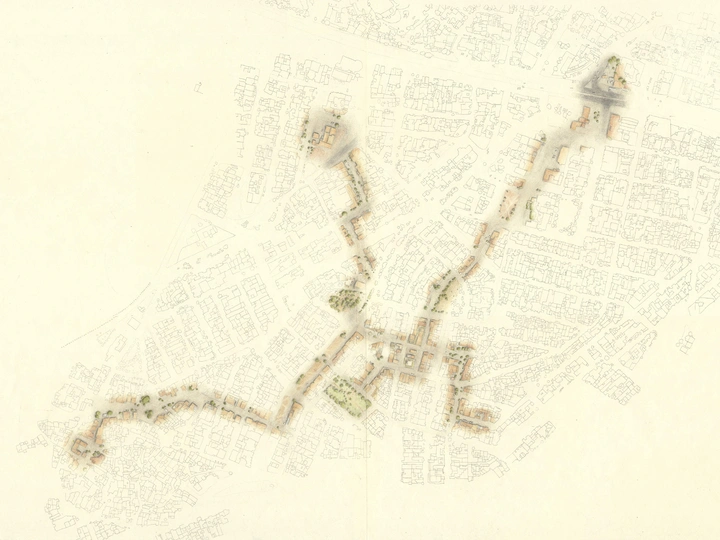A mass of women’s refugee stories told through one

Maia Alva M. Garrido
We are Emma Esmeralda Domino and Maia Alva M. Garrido, two recently graduated architects from the Bergen School of Architecture. Before starting at BAS, Emma studied visual art, while Maia worked for several years at Bergen Museum focusing on the Middle Ages. We met on the first day of school, when we were sent to a remote island to live in tents and conduct field research in groups of eight. Around the fire and while cooking dinners together, we discovered a shared curiosity for the social aspects of architecture.
Ahead of our diploma, we both felt a strong urge to approach the thesis period as an opportunity to explore how we could practice architecture with society and not necessarily through direct design proposals, but as a cultural and spatial practice. We merged our two interests together, women’s sense of safety in public space and migration, and found a project which brought us even closer - to the society and each other.
Emma is currently working as an assistant teacher at the Bergen School of Architecture. In autumn 2025, she will co-host a cross-disciplinary course at BAS titled Architectures of Migration, inspired by the methods developed in our diploma work. Maia recently completed an internship at TEST in Barcelona. She is now working on a project we are hosting in spring 2026, which will involve a series of workshops with children exploring their memories of public space and their visions for our shared future in the city of Bergen.
The project emerges from the personal experience of a woman who was forced to flee her home and land. Through conducting an in-depth interview, we followed her journey from peril to physical safety. With architectural drawings, models and spatial installations, we reconstructed and visualized the various situations she experienced while fleeing, focusing on her perceived space. The project is located in four places chosen from fundamental moments in her life: where she grew up, a ruin in a mountain range, a capital city in Eastern Europe and her current home in Norway. An important aspect of the project was to enter others’ perspectives and to find a genuine and credible way of displaying compassion.
Listening to her story, we felt a warm feeling filling our bodies, which made us aware of the potential such close encounters have, both for the storyteller and the listener. Our meeting with her became fundamental to our approach and led the project to take an intimate and personal path. By narrating a story of fleeing, we seek to create space for finding new ways of approaching, engaging with, and representing this topic, while carrying forward the importance of belonging and dignity.
We believe countries and societies are in need of a more compassionate and hospitable accommodation for migrating individuals and see potential to use architecture as a tool of communication and enlightenment on this pressing matter that involves and impacts all societies. With eagerness, we recognized that our work through the project has led us to the beginning of an approach rather than a final conclusion. We seek to develop new methods of practicing and teaching architecture that embrace its social responsibility and stay connected to the realities we face today and in the future. Also central to this ambition is the conviction that by understanding individuals’ histories and memories of places, we move closer to building a future and society where all are accounted for.